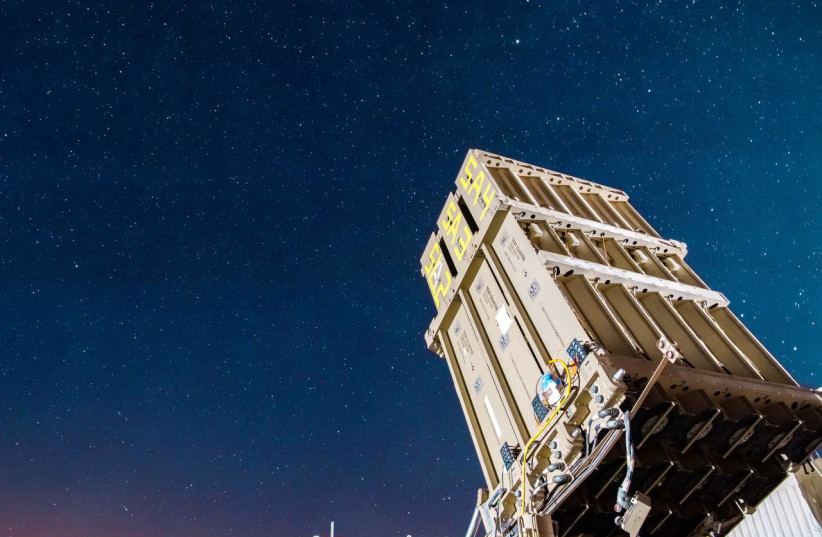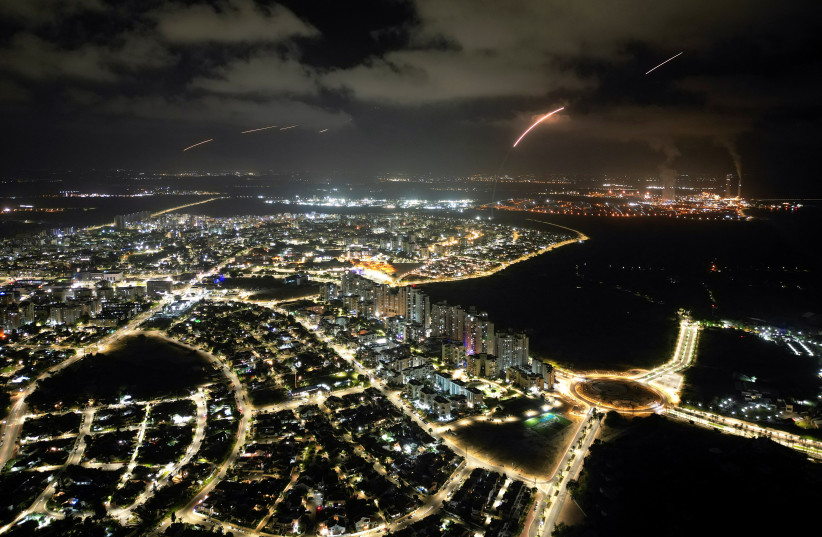As soon as the Palestinian Islamic Jihad (PIJ) fired rockets from Gaza about two and a half weeks ago towards Sderot, as a sign of solidarity with the death of security prisoner Khader Adnan, the IDF's OC Southern Command Col. Liron Batito was asked to pull out the secret attack plan: "Black Cloak" - a booklet of dozens of pages that included quality targets for the attack including photos on PIJ senior officials and terrorist infrastructures.
"About a hundred rockets in the middle of the day in Sderot? The sheer scope surprised us," said an IDF senior officer, adding that "with Hamas, we were quite upset with Islamic Jihad because they did not live up to their commitment. It was clear that Israel could not be complacent and that a different kind of response was required."
The Military Intelligence Directorate stated that not only did Hamas have no part in the rocket barrages, but that the senior Hamas leaders in Gaza, Yahya Sinwar and Mohammed Deif, had no intention of taking part in the escalation if it erupted, and therefore the IDF had focused only on Islamic Jihad commanders.
Operation Shield and Arrow: The critical moments
Every operation has many critical moments, and one of them is the stage for choosing targets to attack. Around each of the goals, there is an in-depth discussion about what the consequences are and what the achievements are, especially when they do not want to drag Hamas into a direct confrontation with Israel.
After recommendations were drawn up at the Southern Command, they were examined by senior Shin Bet Intelligence Division officials.

Unlike Operation Breaking Dawn, IDF Chief of Staff Herzi Halevi decided to open with Israel severely damaging Islamic Jihad's weapons development, production and storage infrastructure to create a huge shock effect on an organization that receives full funding from Iran.
After Prime Minister Benjamin Netanyahu's approval of the operation plan was received, a different kind of challenge presented itself, which was thwarting three different PIJ senior officials at a convenient time for a simultaneous attack.
Problems in launching a counter-attack
The high bar set by the chief of staff created delays in the launch of such an operation whose name was changed from "Black Cloak" to Operation Shield and Arrow, because every time, there used to be a different kind of problem: inconvenient timing for an attack due to weather conditions, or being surrounded by civilians not involved in terrorism that would prevent such an attack from happening.
"The time that has passed has allowed us to organize a set of critical infrastructure targets for an attack, with which we critically optimized our defense through our attack efforts," said an Israeli Air Force senior officer. "We have damaged their launching capabilities, which without question, would have included launches on Gush Dan.
"This is as a result of deep intelligence work, planning together with the Shin Bet's operational unit, which was a key factor in this operation," he continued.
"The time that has passed has allowed us to organize a set of critical infrastructure targets for an attack, with which we critically optimized our defense through our attack efforts. We have damaged their launching capabilities, which without question, would have included launches on Gush Dan."
IAF officer
The intelligence achievement was done thanks to one official who was responsible for cracking the most secret activities of Islamic Jihad and Hamas, as well as the source of their power - which in addition to weapons storage facilities, also included the smuggling routes to the Gaza Strip of weapons, production machines and materials from which explosive charges, rockets, mortar bombs and launchers are mainly produced from.
One minute after the three targeted attacks on Islamic Jihad officials, the IAF launched broad attacks in the entire Gaza Strip, bombing 12 PIJ targets that included a tunnel that contained the largest workshop for the production of rockets, laboratories for the production of explosives, launch pits and weapons depots.

By the end of the operation, the IDF had attacked 32 infrastructure targets. "From these sites, rockets would have been fired at Israeli citizens and the Iron Dome will have to deal with them in the best-case scenario," explained a senior IDF officer.
The targets that were attacked
One of the high-quality reinforcement targets attacked during Operation Shield and Arrow includes a chemical material storage site that was very difficult to smuggle into the Gaza Strip and was built in a civilian environment.
"This is a target that we attacked in Operation Breaking Dawn. They restored the site and we located it again and attacked it. These precise actions create a sense of hostility in Islamic Jihad; they moved the site to another location," an IDF official told Walla.
Another location that was targeted was a tunnel where a factory for the production of rockets was built. Islamic Jihad reportedly built the site deep in the ground because it wanted to upgrade its level of survivability against attacks by the IAF. An IDF lieutenant who specializes in visual intelligence revealed that they used AI to locate production workshops and that "we have very skilled researchers with accumulated knowledge who know how to identify signs to locate production workshops."
A preliminary assessment by the IDF's research division, Islamic Jihad's ammunition sites were "completely wiped out" including the main rocket production areas. When asked about the possibility of Islamic Jihad possibly borrowing rockets from Hamas, an IDF official said that "they don't usually do that."
That official, who will finish his position in a few months and conclude his tenure, said that "we've struck at the heart at the sources of power for Islamic Jihad and Hamas all the time, even on a routine basis. We are also making things difficult for Hamas. There is no entrance from the sea. We also have 90% in the tunnels. My doubt is only in the crossings, specifically the Rafah Border Crossing which may be an entry point for things, it is important to understand that we are hitting the heart of Hamas' production all the time."
